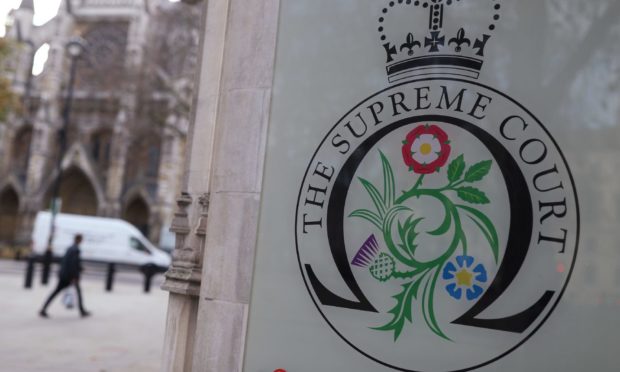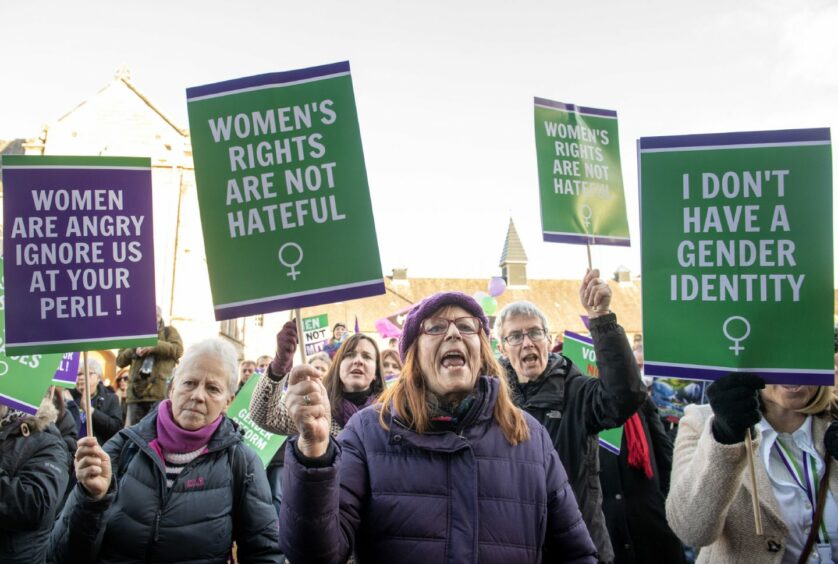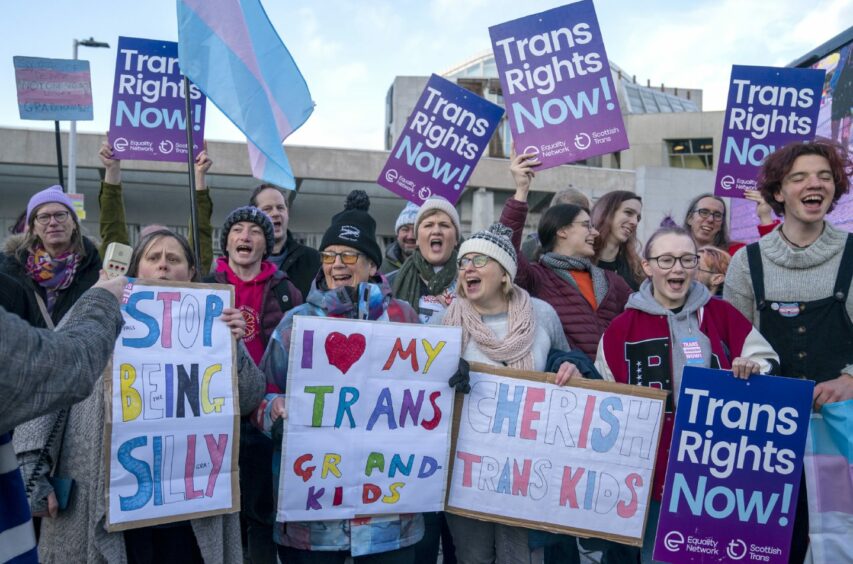The terms “woman” and “sex” in the Equality Act refer to a biological woman and biological sex, the Supreme Court has ruled.
Campaign group For Women Scotland (FWS) brought a series of challenges – including to the UK’s highest court – over the definition of “woman” in Scottish legislation mandating 50% female representation on public boards.
The dispute centres on whether someone with a gender recognition certificate (GRC) recognising their gender as female should be treated as a woman under the UK 2010 Equality Act.
FWS has previously said not tying the definition of sex to its “ordinary meaning” could have far-reaching consequences for sex-based rights, as well as “everyday single-sex services” like toilets and hospital wards.
The argument has been a key focus during the separate employment tribunal in Fife sparked by a complaint about a transgender doctor using a female changing space.
However, lawyers for the Scottish Government told the Supreme Court at a hearing in November that a person with a GRC is “recognised in law” as having changed sex.
In a ruling on Wednesday, justices at the UK’s highest court unanimously ruled in FWS’s favour.
Lord Hodge, sitting with Lords Reed and Lloyd-Jones alongside Ladies Rose and Simler, said the “central question” is how the words “woman” and “sex” are defined in the 2010 Equality Act.
He continued: “The terms woman and sex in the Equality Act 2010 refer to a biological woman and biological sex.”
During the hearing in November, Aidan O’Neill KC, for FWS, told justices the Scottish ministers’ position that sex, man and woman in the Equality Act refer to “certificated sex” – as the sex on a person’s birth certificate whether or not amended by a gender recognition certificate (GRC) – is “just wrong and should be rejected by the court”.
But Ruth Crawford KC, for the Scottish Government, said a person who becomes a woman “in consequence of a GRC” is entitled to those protections “just as much as others enjoy those protections who are recorded as a woman at birth”.
She also said the “inevitable conclusion” of the FWS challenge, if successful, is that trans women with GRCs would “remain men until death for the purposes of the Equality Act”.
The court was also told that since the Gender Recognition Act was passed in 2004, 8,464 people in the UK had obtained a GRC.
The matter first came to court in 2022 when FWS successfully challenged the Gender Representation on Public Boards (Scotland) Act 2018 over its inclusion of trans women in its definition of women.
The Court of Session ruled changing the definition of a woman in the Act was unlawful, as it dealt with matters falling outside the Scottish Parliament’s legal competence.
Following the challenge, the Scottish Government dropped the definition from the Act and issued revised statutory guidance – essentially, advice on how to comply with the law.
This stated that under the 2018 Act the definition of a woman was the same as that set out in the Equality Act 2010, and also that a person with a GRC recognising their gender as female had the sex of a woman.
FWS challenged this revised guidance on the grounds sex under the Equality Act referred to its biological meaning, and the Government was overstepping its powers by effectively redefining the meaning of “woman”.
However, its challenge was rejected by the Court of Session’s Outer House on December 13, 2022.
The Inner House upheld that decision on November 1, 2023 – but granted FWS permission to appeal to the UK Supreme Court.



Conversation